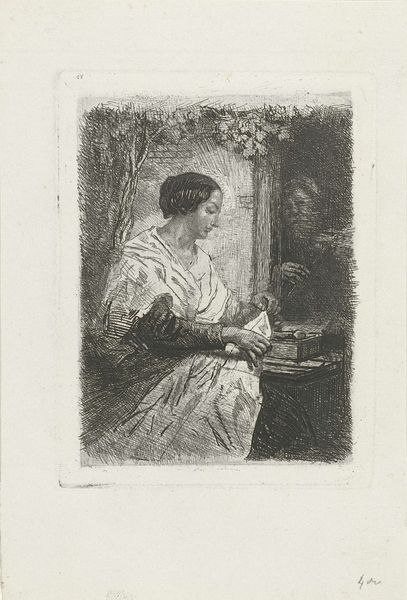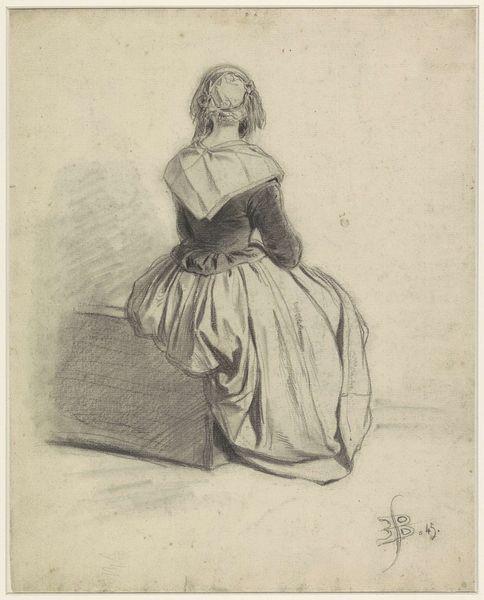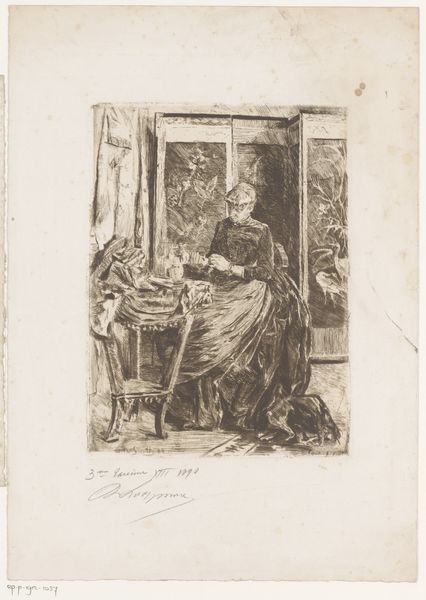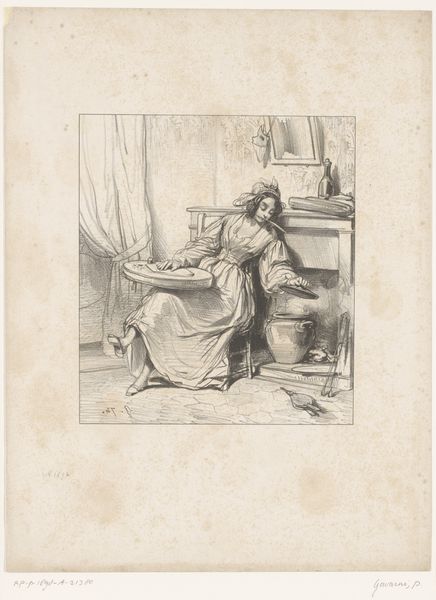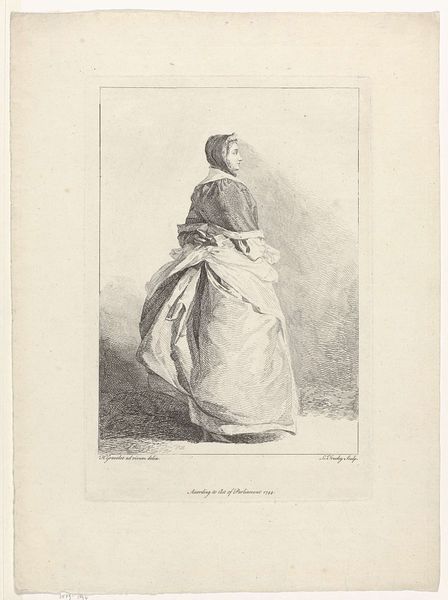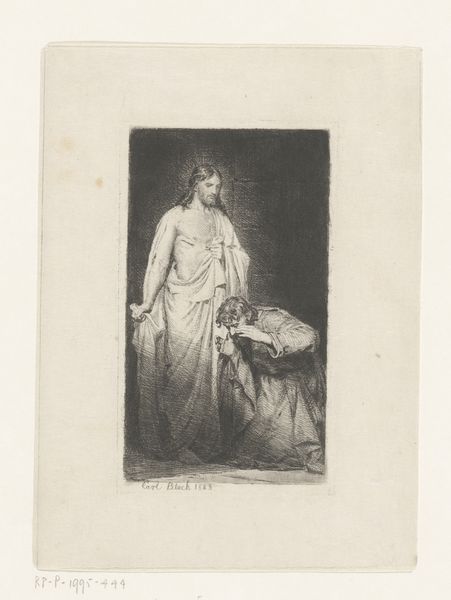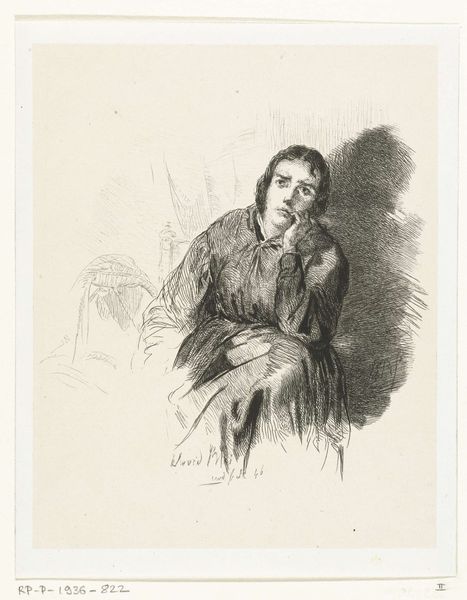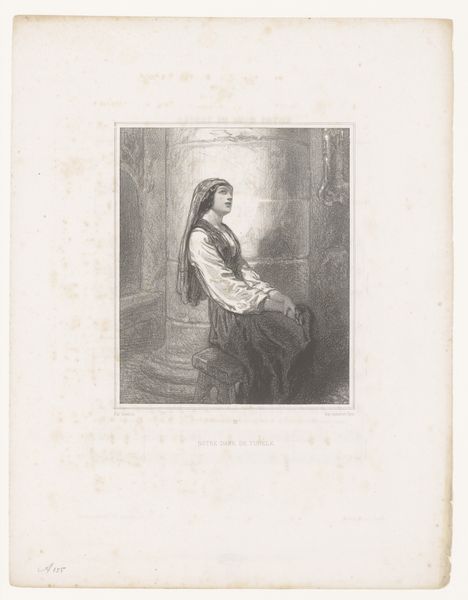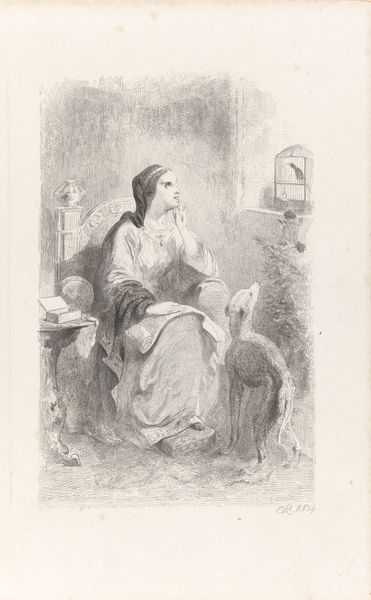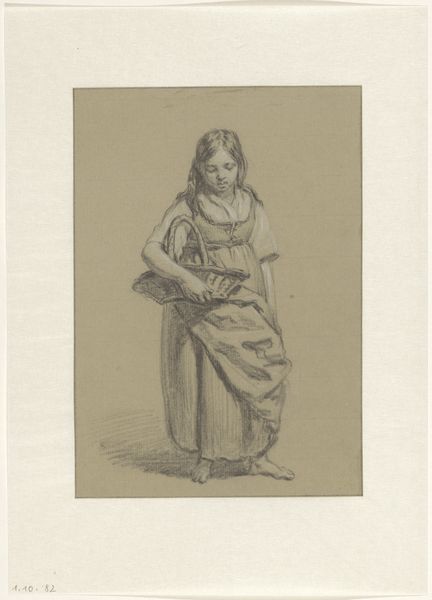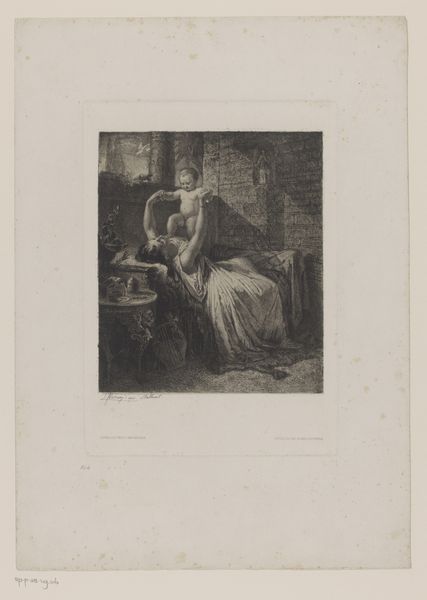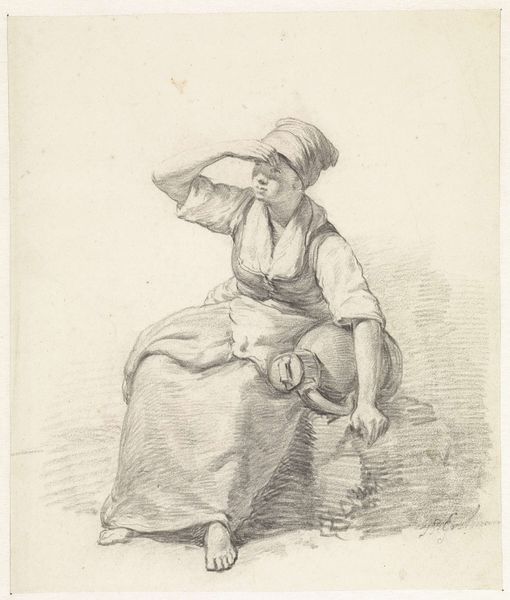
Dimensions: height 140 mm, width 110 mm
Copyright: Rijks Museum: Open Domain
Editor: We are looking at David Bles’s "Study of a Woman Warming her Feet by a Stove," created sometime between 1834 and 1899. It's a print – an etching, actually. The composition feels intimate, almost like we’re intruding on a private moment. What's your interpretation of this work? Curator: The power of this image lies in its depiction of domestic life and the role of women within it, viewed through the lens of 19th-century societal expectations. Notice the placement of the woman; she is indoors, confined to the domestic sphere, her primary function seemingly to maintain the household, embodied here in seeking warmth and comfort. Does the image seem critical or celebratory to you? Editor: That's an interesting point about confinement. I hadn't really thought about it in terms of social expectations, but now I see it. The warmth could be interpreted as comfort, but also a kind of stifling enclosure, maybe? Curator: Precisely! And it is the institutions and cultural expectations surrounding this image which reveal the power dynamics at play. Consider the historical context of art consumption at that time. Who do you think was viewing and purchasing art like this? And what were they hoping to see reflected? Editor: I'd guess wealthy, upper-middle-class patrons who probably enjoyed seeing their own values reflected back at them – family, domesticity, order. Curator: Exactly. Images such as these reinforced social norms. Bles isn’t merely depicting a woman; he is reinforcing the status quo. Does understanding this influence how you view the work now? Editor: It does! It makes me think more about the unspoken narrative and the role this image played in shaping public perception of women and domesticity. It feels like I've unlocked another layer of its meaning. Curator: Indeed. Art is always in dialogue with its social context, and understanding that context allows us to see art not as isolated creations, but as active participants in the shaping of history.
Comments
No comments
Be the first to comment and join the conversation on the ultimate creative platform.

